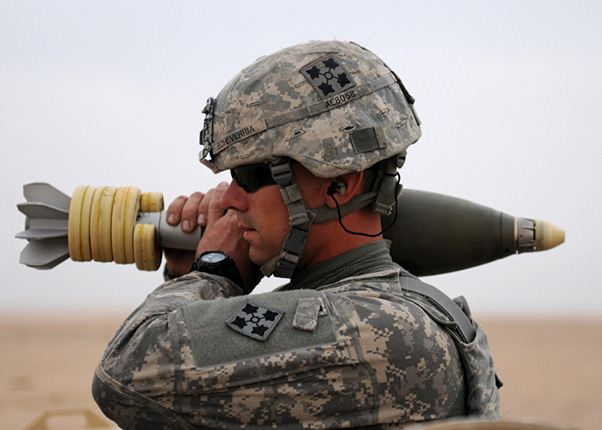
Researchers at the U.S. Army Research Laboratory and the Center for Nanoscale Materials at Argonne National Laboratory have developed a new class of plasma-treated aluminum nanoparticles to be used to improve future explosive weapon systems.
“The ultimate goal of the effort is to extend the range and disruptive power of Army weapon systems,” Dr. Chi-Chin Wu, a material scientist with the U.S. Army Combat Capabilities Development Command and lead author of the study, said.
It has been known for some time that mixing conventional explosive compounds with ultrafine aluminum nanoparticles would significantly enhance the energetic performance and detonation velocity of explosive weapons. The nanoparticles have extensive surface areas compared to their total volume, thus capable of producing extreme heat reactions. However, the nanoparticles’ surface is oxidized in the air, which forms a thick alumina oxide shell, which acts as a barrier to the aluminum’s reaction with an explosive. Previous methods of mitigating this problem replaced the conventional alumina shell with an oxidizing salt called AIH (aluminum iodate hexahydrate), which led to an increase of the detonation velocity of explosive TNT by 30%. The new plasma treatment involves treating materials with a helium plasma to etch away a large portion of the inert oxide shell, then treating it a helium/carbon monoxide plasma to deposit a reactive surface coating on an explosive weapon.
It is expected that this newly developed technique will allow smaller-sized explosive weapons to produce far more destructive power, without increasing their overall size, weight, or amount of explosive compound.
Paper co-author Dr. Rose Pesce-Rodriguez from the Army Research Lab stated, “The plasma approach developed by Wu has opened new possibilities for the U.S. Army to effectively surface-engineer metallic nanoparticles for energetics applications.”
The paper was recently published in the Journal of Applied Physics for a special issue, Fundamentals and Applications of Atmospheric Pressure Plasmas.
